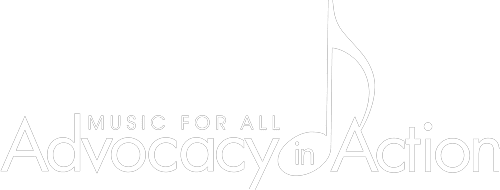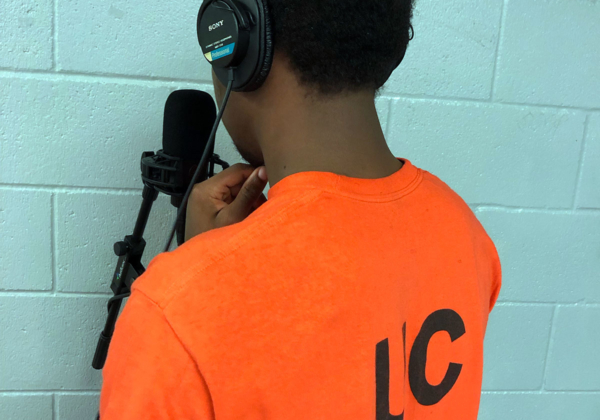Project Confined Redefined
East Mesa Juvenile Detention Center, CA
San Diego County Office Of Education, 6401 Linda Vista Rd, San Diego, CA 92111, USAProject Description
The Confined Redefined Project uses music to expand mathematical concepts to our forgotten teenage boys who are either serving or awaiting further adjudication for serious offenses at Unit Confined, East Mesa Juvenile Detention Center. Music heals. For this group of students, pairing music with rhythm using mathematical principals will direct their focus to more pro-social behaviors while decreasing the negative anti-social tendencies. The Confined Redefined Project has resulted in students learning basic music and mathematical concepts through notation and rhythm. Teaching music in a hands-on approach through self-pacing, self-monitoring, and self-regulation, has allowed students to experience mathematical application during musical output (performance).
All of the students in my unit at East Mesa have experienced extreme trauma throughout their lifetime. Music transcends violence, poverty, racial discrimination, and brings together people of all ages, races, and economic standing to a circle that is unique and equitable. Students confined to this unit have found an acceptable way to regroup and rejoin their community in an acceptable and meaningful manner. Nothing does this more clearly than music. Academic performance has been shown to increase when music instruction using rhythm and sequential skill development has a specific purpose. Music circles has been used to reduce anxiety and promote joint attention to the community. While participating in music, students are able to better regulate themselves in order to maintain tempo during a song and express their feelings through music. It is within the safe circle of music where others are able experiment with new combinations of sound and pitch to create a new and wonderful community member.
While many of these students will not be leaving this facility to return home for their crimes, as they are transferred to the Department of Juvenile Justice system (and possibly to adult facilities), they will always remember the magic of music making and will forever remember how music provided an outlet for their own frustrations, anger, remorse, and acknowledgement.
Target Audience
The target audience for this project are the students who are placed in Unit Confined at East Mesa Juvenile Detention Facility. These are middle/high school boys with ages ranging from (12-20 years old). 100% of these students are quality for free-lunch. Currently my students are 43% African-American; 43% Hispanic; and 14% White/Other. of my students currently, 70% are gang-affiliated. This target audience have all experienced extreme trauma. Some of which were caused by their gang-related activity.
Overview of planning and execution process for this project
Detained youth are highly motivated by music as it is one of the few ways they have available to express themselves. We have been able to have a community group known as David’s Harp come and work with students on developing their skills in creating and developing their own “beats.” This project will allow me to help students put their story to music they create and focus on, while at the same time, allowing them to practice their sense of rhythm, timing, math, language arts, mental health, and emotional well-being.
Since juvenile detention schools are “year-round,” I would like to develop student collaboration through writing and developing their own song as the final product. This would begin in the Fall 2019 semester as they work on understanding how to write (transcribe) their beat in standard musical notation. Working with the probation department to schedule an exhibition of their work that would allow students’ parents to sit in an audience as they share their song with others as they fine tune their emotional literacy skills and create a performance of their product by the following Spring 2020.
Community Impact
This project was not mandatory for all students. This allowed students who were interested in learning how to create and manage beats to further develop and explore in a safe learning environment. During this project, students supported each other and collaborated on how to modify and improve on what they were doing. The staff from David’s Harp was able to work with students to record their own songs and share their talent by explaining how the recording process works, creating tags for their songs, developing basic rhythms, etc. While several of the students were transferred prior to completion, it planted the seeds for learning, and it is my hope that they continue to grow their talent.
Overall budget
$1100
Specific Budget Breakdown
- Item Description Quantity Item Cost Total Cost
- Midi controller (Nektar IMPACT LX25+) 1 $99.98 $99.98
- Production hardware control and software package with unlimited tracks for processing and recording 1 $449.00 $449.00
- Headphones (Bose Quiet Comfort 25) 3 $159.00 $477.00
- Headphone jack splitter 1 $6.99. $6.99
- Subtotal $1,032.97
- Sales Tax (CA 7.3%) $75.41
- Total $1,108.38
What was your total program enrollment during the prior school year?
over 100 students
What is your projected program enrollment for the current school year?
100-120 students
New or recurring project?
New ProjectChallenges/obstacles that were encountered
The greatest challenge/obstacle I faced during the development of this project is time. My students are detained in confinement pending the adjudication/resolution of their case. Since the students who are placed in UC (Unit Confined) are facing more prosecution for the most violent crimes, my establishing a working relationship is a race against time. I have had David’s Harp come into our unit and complete a 6 week residency (which involved them coming in once a week for one hour) and during that time nearly half of my students had been sentenced and/or transferred to other locations (Youth Offenders Unit – YOU, Urban Camp, or turned over to the State Department of Juvenile Justice).
The way I handle these challenges is to work diligently with these students, often times before school starts or after school (with probation staff approval).
Measurement of the success/effectiveness of this project?
Success and effectiveness is measured by the overall number of kick-outs due to negative or dangerous behavior in the classroom. Students refusal to engage in school activities often warrants a kick-out which is viewed by the probation staff as a mark down. Excessive mark downs result in oppressiveness amongst the student population and often results in more fights (both in class and outside of school hours), lock-downs, and increased shake-down searches in the unit. Programs that promote and support student learning stems from students’ ability to identify and acknowledge their own experience and fostering and growing new skills in socially acceptable ways. I would like to see this project become a recurring project to be used to create a positive avenue for students to increase their emotional literacy and allow students to focus on learning.
Advice for someone looking to replicate this project in their own community?
My advice for someone trying to replicate this project in their own community would be to look for community resources for teaching artists (unless they have that expertise), materials, equipment. Build a solid working relationship with your probation staff and establish a restorative atmosphere in your classroom. Do not be shy about inviting probation and administrators to come into the classroom during the process. Be cognizant and respectful about the trauma students have experienced, whether they caused it or not. Maintaining a non-judgmental attitude towards these students will allow you to create a trusting relationship that will allow them to once again have faith in their teachers. Finally, make it fun and have fun in the process. When students are having fun, their brain allows them to learn and this generates the right chemical reaction in their brain to heal and allow growth.



